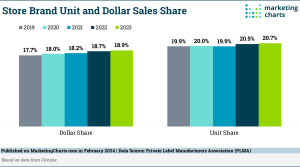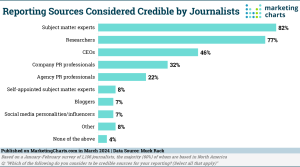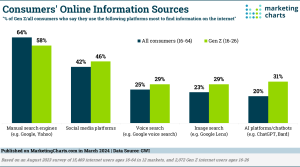 B2B marketers’ use of programmatic advertising may be reaching a plateau, but not so their spending on programmatic, says Dun & Bradstreet in its 2019 Data-Driven Marketing & Advertising Outlook [download page]. The survey of 237 B2B marketers – conducted by Adweek Branded last month – found that 61% of respondents will increase their spending on programmatic advertising next year. That includes one-fifth who expect a significant increase that exceeds 25%.
B2B marketers’ use of programmatic advertising may be reaching a plateau, but not so their spending on programmatic, says Dun & Bradstreet in its 2019 Data-Driven Marketing & Advertising Outlook [download page]. The survey of 237 B2B marketers – conducted by Adweek Branded last month – found that 61% of respondents will increase their spending on programmatic advertising next year. That includes one-fifth who expect a significant increase that exceeds 25%.
Those figures are similar to last year’s report, when 64% intended to increase their programmatic ad spending, and 18% by a significant amount.
Also holding steady is the percentage of respondents who report being involved with programmatic advertising. That percentage rests above 60% for the third consecutive year, having risen from 54% in 2015.
Interestingly, the types of B2B advertising that respondents are buying programmatically has shifted a little from last year’s report. There seems to be slightly less interest in display and video, though display is still the most commonly bought ad type.
Instead, B2B marketers who are buying ads programmatically seem more invested this year in social ads, reported by two-thirds (67%), up from half (51%) last year. Respondents also appear to have stepped up their programmatic buying of both mobile (67%) and TV ads (17%), the latter maybe portending an intriguing development.
The analysts note that challenges surrounding programmatic advertising remain similar to years past, led by targeting of right audiences, measurement and metrics, and lack of knowledge and skills. Brand marketers in particular appear to be more acutely challenged by targeting and lack of expertise than agency marketers, who instead are more heavily concerned with viewability and bot traffic.
Amid murmurs that blockchain could one day become the main tech ecosystem for digital advertising, the Dun & Bradstreet report reveals that it’s not yet top-of-mind for B2B marketers. Only 5% say that some current solutions show promise for their digital advertising program, while an additional 24% feel that it could play a role but that viable solutions aren’t yet in existence.
Even so, those 29% envisioning a role for blockchain are matched by 28% who simply don’t, with another 43% not knowing enough to have a strong opinion.
4 in 10 Say ABM is Very Important
Turning to account-based marketing, 37% of respondents reported currently being engaged with ABM. Somewhat surprisingly, that represents a downturn from last year’s results. While some marketers are struggling to secure buy-in for their ABM efforts, most research suggests that B2B marketers’ use of ABM is on the rise.
Still, 4 in 10 described ABM as being either “extremely” (16%) or “very” (24%) important to their organization’s marketing efforts, and another third (31%) classified it as “somewhat” important.
For the marketers surveyed, the biggest hurdles to ABM success are lack of clarity around an ABM strategy (35%), lack of time and resources (31%) and lack of understanding of ABM (28%).
In separate research recently released by DnB, respondents cited alignment with sales, identification of target accounts and ability to measure their efforts as the most critical factors behind ABM success.
The full study is available for download here.

























